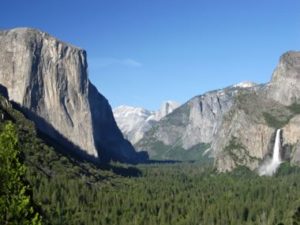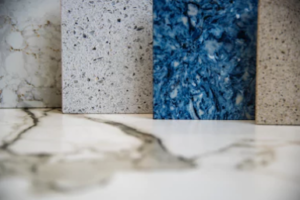What is Granite?
It is a very hard, granular, crystalline, igneous rock that forms deep underground. It is formed by the solidification (cooling), or in some cases, by solid-state transformation of molten or semi-molten material in the earth’s upper mantle or crust, into crystalline rock that makes up much of the earth’s crust. Mineral gases and liquids penetrate into the stone and create new crystalline formations with various colors.

Why is it good for countertops?
This natural stone is less absorbent than some solid surface (plastic) products and is resistant to stains, thankfully almost any liquid spilled on a coated top, if wiped up within a few minutes will not stain. Liquids that do not evaporate, such as oils, will cause stains if left to soak into the stone. We recommend sealing all natural stone and we will seal your countertops at installation.
Each piece is unique
Granite is a natural stone, and therefore, will have veins, pits, pores and fissures on its surface. These surface marks are in no way a defect, and in some cases can be said to enhance the beauty of the product. This stone is predominantly white, pink, or gray in color, depending on their mineralogy.
Fun Fact: it is nearly always massive (lacking any internal structures), hard and tough, and therefore it has gained widespread use throughout human history as a construction stone. Granite and related marble industries are considered one of the oldest industries in the world.
Yosemite Valley
Yosemite Valley: Photograph of California, showing the steep granite cliffs that form the walls of the valley.
Granite Variants
All of the rocks above would be called “granite” in the commercial stone industry, yet, included is gneiss, pegmatite, and labradorite.
Mount Rushmore

Mount Rushmore in the Black Hills, South Dakota is a sculpture of United States Presidents carved from a granite outcrop.





